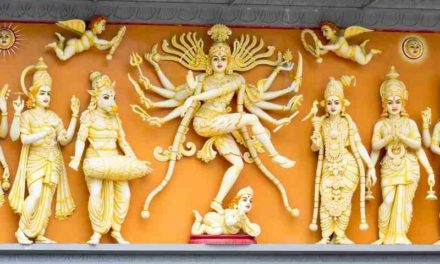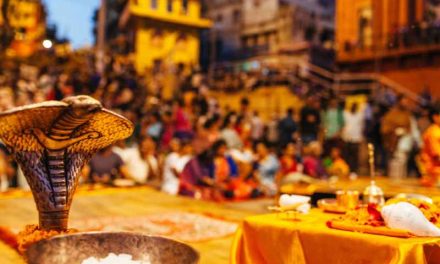There are a number of Rishis, Acharyas, and Mahans who have made significant contributions to the worldview, theology, and philosophy of Hindu Dharma – they are the founders of several lineages within the forest of Dharma, and their contributions are documented in the Vedas. Even so, they represent the pinnacle of a long-running tradition.
Hindu Dharma was created by the beholders and bearers of Sanatan dharmas, who were the yogis and rishis, who were the forefathers of the religion. Many yogis and rishis worked together to build Hinduism; rather than a single individual, the consequence of their sadhana and siddhi formed Hinduism.
Hindu Dharma is not a religion; rather, it is the confluence of philosophies pertaining to science, behavior, inner being, righteousness, virtuosity, nature, and other topics. These philosophies are not contained in a single book or written by a single author.
There are a number of books that control such matters. There is no such thing as a single deity. People may benefit from it in accordance with their needs, interests, choices, and occupations, and if they don’t, they can just admire nature.
The term ‘Hinduism’ clearly denotes the distinctive religious, philosophical, and cultural systems that developed on the Indian subcontinent and have spread across the world. Jainism, Buddhism, and Sikhism are examples of traditions that started on the east bank of the Indus River and as a result, they are legitimate to include in the term ‘Hindu’.
The origins of this ‘Hindu Dharma’ tree may be traced back to the ancient Vaidika Dharma tradition (Vedic system). This Vaidika Dharma is preserved in the Vedas, which are compilations of poetry and prose that describe spiritual truths experienced by enlightened human beings, known as rishis, throughout their lifetime.
It was believed that yajna was a significant aspect of the Vaidika Dharma because it was a representation of the ever-changing cosmos that is perpetuated by recycling and regeneration.
This energy of the world was re-enacted symbolically via gifts made to Agni, the supreme spiritual principle signified by fire, which was the highest spiritual principle symbolized by fire. More on this subject will be discussed later.
Having said that, I will refrain from going into the classic account of how the Vedas were supposedly ‘formed,’ since it has been told ad nauseam many times. Instead, I’ll list a few names from the Rig Veda, which is considered to be the oldest of all Hindu Dharma scriptures.
The Rig Veda is comprised of suktams (hymns) composed of numerous rishis over a period of time. Because each rishi is identifiable by his patronymic, it is possible to trace the family tree all the way back to its origin.
In addition, the rishis make notes to their forefathers in their songs. This information leads us to believe that Angira, Bhrigu, and Atharva are the most ancient of the Vedic people’s rishis (sage-teachers).
It seems that they were also referred to as ‘Navagva’s and ‘Dashagva’s’, among other names. Because these three rishis are not mentioned as descended from earlier predecessors, they are revered as ancestors and path-finders by all other rishis in the Rig Veda. In addition, rishi Trita Aaptya seems to be a very old figure, with no ancestors described in his biography or tradition.
As described in early Vedic literature, society (Purusha) is a creature (as opposed to a person) that is formed by a confluence of four different types of people. And specialist organizations form the feet. As a result of this, society is also isolated. As a result, the concepts of association and division become important.
We are pointing to the advent of human culture via the custom of culture in later Puranic customs when we refer to Brahma as the creator in the context of the maker. Following the stages of adolescence (Krita), youth (Treta), development (Dvapara), and mature age (Kali), culture endures four periods of death (Pralaya), after which it is resurrected (Pralaya).
The death is shown as a flood, and the only things that survive are the first human, Manu, and the Vedas, which were saved by Vishnu. This is a situation that occurs often. Brahma is also referred to as Prajapati, which means “father of all living things.” As a result, the sages are created from his psyche as “mind-conceived” offspring, a reference to abiogenetic generation.
Next come children, who marry and bear offspring with the women they marry and raise. According to the Puranas, Rishi Kashyapa, a son of Brahma, marries a large number of women who give birth to a variety of different animals. Timi gives out fish, Kadru brings forth snakes, and Vinata brings forth fowls.
Whatever the case, it is never apparent where the females are coming from: would they claim to be from Brahma’s body or from someplace else entirely? The Brahma, as well as every other male component, seem to be representations of the brain that is planted in issue (referred to as females) in order to create encapsulated life.
It is a recurring theme in Puranic tradition, especially after the rise of Tantra, that the male and female structures are associated with one another, as is the relationship between psyche and matter. Shiva is unable to create the universe without the assistance of Shakti; he would hunger if he did not have her.
Nature is the manifestation of Shiva and Shakti’s cosmos in Hindu Dharma. This dualism is explicitly refuted in the Gita. Moreover, Krishna affirms that he is the source of all life and that he has two “bellies” (yoni), which are psyche and matter, respectively. Some individuals prefer to use the term awareness rather than mind when referring to consciousness.
Is it the brain or the matter that initiates the process? Old Vedic melodies, some of which are more than 3,000 years old, include the most celebrated “creation” psalm. It is especially dubious whether this query can genuinely be answered in the right sequence, even when it comes to the “divine beings that arrived later.” This skepticism may also be present throughout the Upanishads, despite the fact that various attempts are made to dispel it.
Following that, we are told in Tantras that the issue began as the Goddess, and from her came the brain, which consisted of three masculine structures: Brahma, the minister; Vishnu, the lord; and Shiva, the ascetic. Brahma attempted to gain dominion over the Goddess and was killed as a result.
When Shiva attempted to reject the Goddess, he was captivated and changed into his wife, Parvati. Just as the Goddess considered Vishnu to be her beloved, he was elevated to the position of supervisor. Brahma’s desire to exert control over the Goddess is cited as the reason for his lack of adoration. These are just the Puranic interpretations of Hindu Dharma.
The Vedanta traditions are only concerned with the spiritual experience and it takes the Hindu Dharma to a Psychological dimension. The knowledge of the self is considered the highest achievement in Hindu Dharma.





